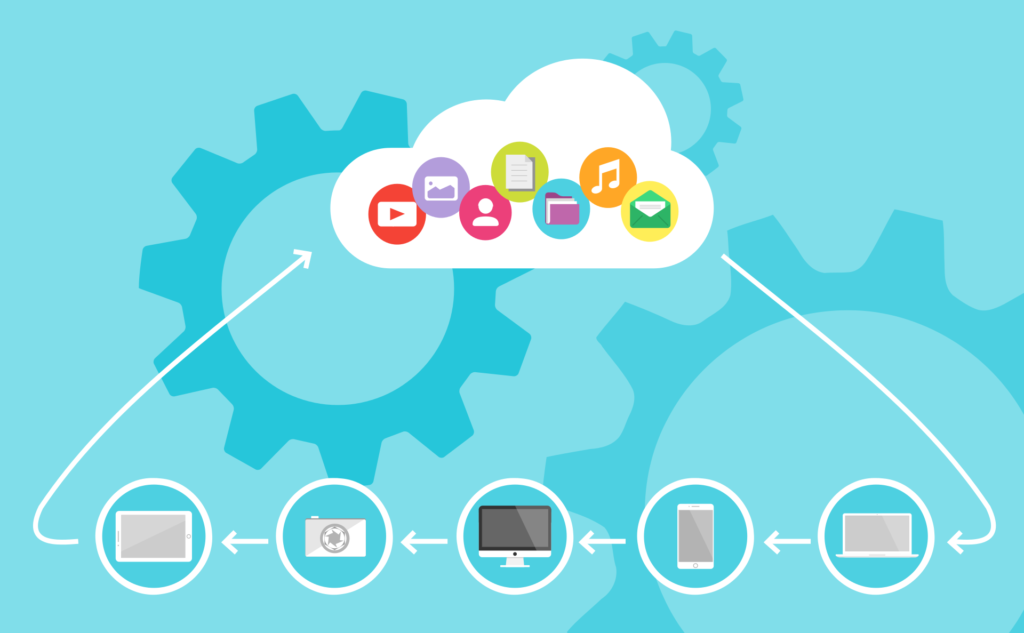In a recent poll, over 63 percent of the businesses surveyed claimed that digitally transforming their company was the driving factor behind adopting cloud-based technologies. Many companies are starting to embrace both the power and convenience that comes with cloud-based apps.

Source-Pixabay
App developers are now trying to build their programs in a way that they are easily adopted onto the cloud. Failing to utilize this technology in your app development process can lead to a variety of problems.
As an app developer, your main goal needs to be staying on the cutting edge of your profession. This is why you need to focus on creating cloud-friendly app architecture.
Allowing consumers to use your programs to incorporate third-party solutions like AWS CloudWatch is a must. By doing this, you can keep consumers happy and your apps popular.
The following are some of the things you need to do when trying to construct cloud-ready application architecture.
1. Your App Needs to be a Collection of Services
For the most part, cloud apps are deployed as a collection of either APIs or cloud services. By building up the data from the various services in an app, companies are able to provide composite services and apps to their employees or clients with ease. This is why implementing a service-based architecture within your app is so crucial.
Some developers have a hard time letting go of the thought that their programs need to be centered around user interface rather than a collection of services they can offer independently. One of the biggest benefits of developing cloud-friendly app architecture is that it allows you to distribute loosely coupled programs with ease.
Many of the most successful app developers know how to break up their apps into hundreds of different services. Focusing on adding more value to your users is a great way to see where you need to take your cloud architecture.

Source-Pixabay
2. Avoid Coupling Data With Your Application
Tightly coupling data to your application can lead to big problems when this program is placed on the cloud. For the most part, private and public clouds prefer apps that break processing and data into two separate components. By coupling these vital parts of your app, you will make it very hard to have cloud-based success.
By decoupling your data, you have the option to process and store it on just about any public or private cloud. If you have a client that wants their data to remain on local servers, it will be much easier to accomplish this task when you decouple data from your actual app.
Not only will decoupling the data keep sensitive information safe, but it can also actually help the app perform better as well. Without the additional weight of data storage, an app will be more responsive for users. Most modern consumers want apps that are both easy to use and lightning fast. With the right cloud app architecture, you can give users what they want with ease.
3. How Will the Various Components of Your Application Communicate?
Some newcomers to the world of app development think that decoupling their programs means that they will automatically work well in the cloud. Having app components that are constantly communicating will usually lower the overall performance of the program. This is why you have to focus on creating apps that optimize the power of communication between the various components.
While this may sound like a relatively easy and straightforward process, it is anything but. Most new app developers have to work for years before they feel comfortable developing programs for the cloud. Finding a way to combine app component communications into a single stream of data is essential. By doing this, you can avoid the strain that constant communication can put on your cloud-based app.

Source-Pixabay
4. Performance and Scaling is a Must
One of the biggest reasons why cloud-based apps are so popular is due to how well they perform and how easy they are to scale. When constructing your app, you need to keep these two things in mind to ensure they work well on the cloud. If a business needs to scale an app in a hurry due to increased demand, you need to provide them with this option. Failing to build an app that is easy to scale can lead to crashes and functionality issues down the road.
When trying to build a cloud-based app that performs well, you will have to take advantage of load testing. This type of testing simulates an environment of increased use to see exactly where your app’s breaking point is. By running a few load tests throughout the app development process, you can easily see where changes need to be made.
Knowing how the app will react if a 1,000 or more users login at the same time is crucial. The last thing you want is for your new app to malfunction due to a lack of testing. While consistently load testing an app will be time-consuming, it is well worth the effort. Optimizing your new app to handle increased traffic is a great way to ensure your clients get the quality product they are after.
Rushing through the development of a cloud-based app will usually lead to a variety of crucial mistakes being made. As an app developer, your main goal should be providing clients with high-quality programs. The only way to do this is by adequately testing your apps throughout the development process.
You can also stay updated by subscribing to iTechCode.